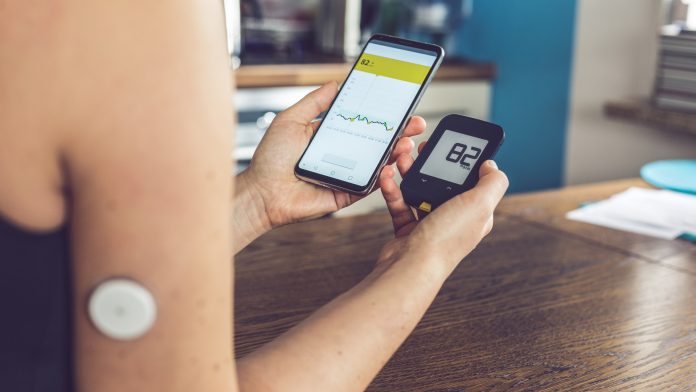
Todd Boudreaux, from Beyond Type 1, discusses the significant disparities in access to medication and care for diabetes patients.
It is estimated that approximately 463 million people around the world are living with diabetes, with this figure expected to rise to 700 million by 2045. Global disparities in access to treatment, support and education is a clear sign that improved legislation and access to care are urgently needed. To find out more about those challenges facing the management and treatment of diabetes and how the COVID-19 pandemic has impacted the delivery of diabetes care, Health Europa Quarterly spoke to Todd Boudreaux from Beyond Type 1, a non-profit organisation that provides valuable resources for those living with diabetes and seeks to improve diabetes diagnosis and accessibility to care through providing educational programmes and resources.
What are the key challenges currently facing the management and treatment of diabetes?
One of the biggest challenges facing people with diabetes, in a word, is access. That is access to medication, education, and technology. For people living with type 1 diabetes this includes access to insulin or glucagon and for people with type 2, it can be access to insulin, glucagon and oral medications. Access to diabetes information and resources is a big issue globally. Another key challenge is access to devices, whether that is continuous glucose monitors (CGMs) or insulin pumps, both of which have been shown to improve the treatment and management of both type 1 and type 2 diabetes. Everybody with diabetes, certainly everybody who takes insulin, would benefit from having a CGM.
Because of the way our predominantly privatised healthcare system works in the US, access to insulin is a big issue. There are public insurance programmes like Medicare and Medicaid for people who qualify but the way the system is set up is such that the list price for insulin is still very high-a vial could be as high as $300. There are programmes available that people may not be aware such as co-pay cards or programmes from the manufacturers, but not everyone qualifies. People may not have suitable insurance or have an insurance plan with a high deductible. Raising awareness about accessible and affordable insulin is a major issue that advocates in the US are working on, and Beyond Type 1 has launched GetInsulin.org in the US to help connect people with all of the insulin options available to them, regardless of their circumstance.
Another big issue is that access to treatment and support for ethnic minorities with diabetes is far worse than it is for white people living with diabetes in the US, and that needs to change. We know that HbA1cs are higher, and we also know that technology is used much less in ethnic minorities, and I think that this is an issue that everyone working in diabetes should focus on even if it does not affect us all equally.
As someone who has been living with diabetes for 21 years, one final thing I would like to highlight, and that I have witnessed personally in my own care, is the impact diabetes has on emotional and mental health. There has been a big shift in the treatment of diabetes over the past few years to view it not just as a physical disease, but also as a disease that affects your mental wellbeing. I imagine that is similar for all chronic conditions, but it is something that I think people were not really discussing before.
Has the COVID-19 pandemic had a significant impact on people living with diabetes?
The pandemic has affected nearly everyone on Earth including but especially those living with diabetes. I think having to stay inside for a year has really impacted people’s mental health. The American Diabetes Association (ADA) had their annual conference recently and highlighted that people with diabetes represented 40% of COVID-19 deaths in America. Even though only 10% of Americans have diabetes, they were 12 times more likely to die of COVID-19 and six times more likely to be hospitalised. We know that with diabetes, specifically type 2 diabetes, it was a really high indicator of poor outcomes for COVID-19. There was so much uncertainty around diabetes as a risk factor for catching the disease following early reports during the pandemic. The consensus among leading endocrinologists and experts that we have talked to is that type 1 diabetes on its own is probably not a risk factor for catching COVID-19 and, probably not a risk factor for worse outcomes if everything else is fine. Of course, anytime you are sick with diabetes, you need to be careful and watch your blood sugars, I think generally there was a lot of that uncertainty around this.
Another way that the pandemic has affected those living with diabetes relates to vaccine rollouts and prioritisation. In the US, vaccine programmes were rolled out on a state-by-state basis. We are pretty lucky in America as now virtually anybody who wants a vaccine can get it, but during that initial rollout it was really unclear, and it was kind of location dependent.
For most people living with diabetes their care has always been in person, but COVID-19 shifted the model of care to telehealth. I would say on the whole it has been positive and more telehealth will lead to more people going to visits and actually getting the treatment they require. There are however some unintended negative consequences, firstly that people are getting fewer tests done so we do not know about HbA1c numbers and other measures of care as much. People will also still need in-person appointments for some things requiring physical examination, to get their feet checked for instance. The pandemic really accelerated that shift to telehealth and ultimately, I think it will be very helpful to people.

The pandemic really accelerated that shift to telehealth and ultimately, I think it will be very helpful to people.
Studies have found that it is possible to reverse type 2 diabetes if caught early. Could you outline some of the key preventative or protective lifestyle measures which people can take to lower or even reverse their risk of developing lifelong diabetes?
In the US we have a classification known as prediabetes which is before you are officially diagnosed with type 2 diabetes and when your blood sugars are a little higher, but it is not really in the danger zone for increased risk of complications yet. There is a really great programme by the CDC called National Diabetes Prevention Program (National DPP) which lists some helpful lifestyle interventions. As you might expect, these include eating lower calorie diets and exercising. One other thing that I would consider a lifestyle intervention that has been shown to help is regular coaching sessions and peer groups as they can really support and encourage you to exercise and eat healthier.
It is important to note that just because you may fall back into the normal range and no longer officially have prediabetes, you should still implement those healthy lifestyle changes. If you are diagnosed with type 2 diabetes and you no longer need medication you might still have some insulin resistance, so it is something to be mindful of. It is not simply a case of reversal, or a cure in the sense that we typically think of cures for diseases. It is more of a long-term treatment strategy. If you are able to prevent type 2 diabetes, that is great, but you can also live a very happy, healthy, and long life with type 2 diabetes, if properly informed and treated.
How do you think digital technology could be employed to stimulate behavioural change in patients?
There are two main areas that I would focus on and one of them is access to CGMs. Being able to see your blood sugar on your phone or a reader throughout the day without having to prick your fingers has been a real game changer for people living with diabetes. You can stop yourself from going as high or as low because you see ahead of time where your blood sugar is heading. Even for people with type 2 diabetes who may not be on insulin, they can see any specific patterns in their blood sugar levels when they eat certain foods.
Another area is digital coaching and there are a number of programmes in the US such as Livongo, mySugr and Omada Health. Likewise, there are smart pens that can recommend insulin to you based on what your blood sugars are and that takes a lot of the thinking and guesswork out. Being able to digitally log your insulin doses and show your endocrinologist is really helpful. For people using insulin pumps, one of the big things that they like about those pumps is that all of their information is stored. It used to be every time you administer insulin, you were supposed to write it down in a logbook.
And once again, I do think telehealth is another way that digital technology has changed the game for the management of diabetes.
What measures could be taken at a policy level to improve the treatment and care of patients with diabetes?
Enacting legislation to make insulin more affordable and more accessible would really help. I think making sure that nobody ever has to pay the list price for insulin in America is really important. There was recently a rule change for Medicare that has made it easier to get a CGM. It used to be that you had to show that you were doing blood tests on your fingers four times a day and be in a certain range but now insurance can cover CGMs for people on Medicare without requirements being as strict. I do think structural systemic change is needed in America. With the way the healthcare system is set up it has encouraged prices to go up unregulated in some cases.
Beyond Type 1 partners with an organisation called Life for a Child who works with local organisations and governments in under-resourced countries to save the lives of young people with diabetes. Thousands of people lose their lives every year around the world because their diabetes is left undiagnosed or untreated. This could be easily prevented simply by ensuring people have access to treatment and educational resources. For example, Life for a Child did some work with a local partner in Mali to support young people living with diabetes. In 2007 there were only 28 people under the age of 25 in the entire West-African country who were living with diabetes, but with intervention and help, today there are over 700. There is so much work that can be done globally to make the lives of people with diabetes possible.
I am a big fan of the Diabetes Prevention Program (DPP). I do think more programmes that allow people to get coaching would be cost saving in the long run. Governments would also do well to institute their own national policies and make the barriers to these programmes less difficult so that everyone can access devices like smartphones or computers if they need them. Digital technology can exacerbate disparities as not everybody has access to an internet connection or the ability to jump on a telehealth appointment. Enacting legislation to make devices and medication affordable, but also creating programmes to help and educate people about how they can either prevent diabetes or live their best life with diabetes is really important.
Todd Boudreaux
Director Of Content
Beyond Type 1
www.beyondtype1.org
This article is from issue 18 of Health Europa. Click here to get your free subscription today.






















